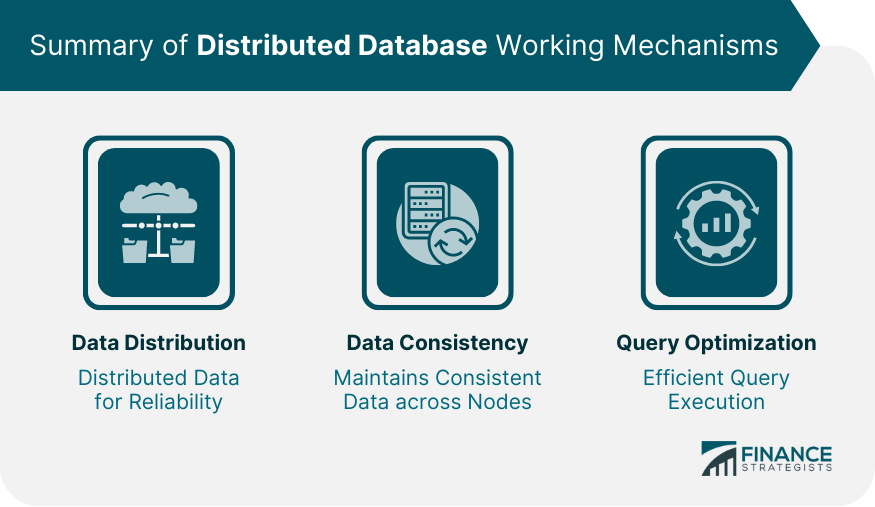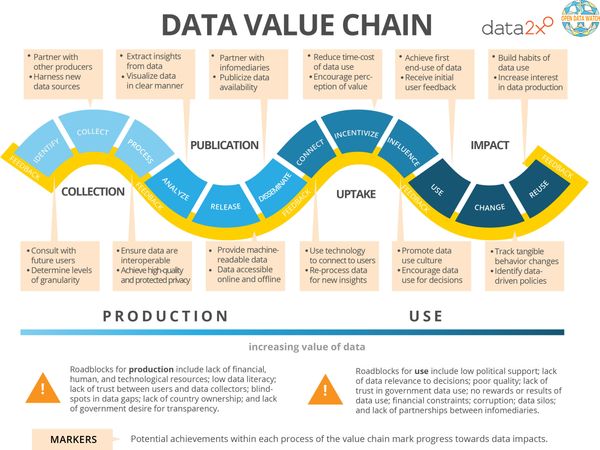Overview
What is database optimization?
Database optimization is the process of improving the performance and efficiency of a database system. It involves analyzing and modifying the database structure, queries, and indexes to minimize resource usage and maximize query execution speed. By optimizing the database, organizations can achieve faster response times, reduce storage costs, and improve overall system performance. Effective database optimization requires a deep understanding of the database architecture, data access patterns, and business requirements. It involves techniques such as index optimization, query tuning, and data normalization. By implementing best practices for database optimization, organizations can ensure that their databases operate at peak efficiency, supporting critical business operations and delivering a seamless user experience.
Importance of database optimization
Database optimization is crucial for maximizing efficiency and performance. It involves organizing and structuring the database in such a way that it can retrieve and process data quickly and efficiently. By optimizing the database, businesses can improve response times, reduce resource usage, and enhance overall system performance. This is especially important in today’s data-driven world, where large amounts of information are generated and processed on a daily basis. Effective database optimization techniques, such as indexing, query optimization, and data normalization, can significantly improve the speed and efficiency of data retrieval and manipulation. By implementing these best practices, businesses can ensure that their database systems operate at peak performance, resulting in improved productivity and cost savings.
Benefits of optimizing databases
Optimizing databases offers several benefits. First, it improves the overall performance of the system by reducing the time required to retrieve and manipulate data. This leads to faster response times and increased efficiency in handling large amounts of data. Second, database optimization enhances data security by minimizing the risk of unauthorized access or data breaches. It ensures that sensitive information is properly encrypted and protected. Third, optimizing databases helps to reduce storage costs by eliminating unnecessary data and optimizing the storage structure. This leads to significant savings in terms of storage space and related expenses. Lastly, database optimization improves the scalability and flexibility of the system, allowing it to handle increased workloads and adapt to changing business requirements. Overall, optimizing databases is crucial for maximizing efficiency and ensuring the smooth operation of any data-driven application.
Choosing the Right Database

Understanding different types of databases
Understanding different types of databases is crucial for effective database optimization. One important aspect to consider is cloud data management. With the increasing popularity of cloud computing, organizations are leveraging cloud-based databases for their data storage and management needs. Cloud data management offers numerous benefits, including scalability, flexibility, and cost-effectiveness. By utilizing cloud-based databases, businesses can optimize their operations, improve data accessibility, and enhance overall efficiency. It is essential for organizations to understand the various types of cloud databases available and choose the most suitable option based on their specific requirements and goals.
Factors to consider when selecting a database
When selecting a database, there are several factors that need to be considered. One of the most important factors is finding the right Oracle consulting services. These services can provide valuable expertise and guidance in optimizing the performance and efficiency of your database. By partnering with a reputable Oracle consulting firm, you can ensure that your database is designed and configured to meet your specific needs and requirements. Additionally, Oracle consulting services can assist in identifying and resolving any potential issues or bottlenecks that may be hindering the performance of your database. With their help, you can maximize the efficiency of your database and improve overall system performance.
Comparing popular database management systems
When it comes to comparing popular database management systems, there are several factors to consider. The first factor is performance, as it plays a crucial role in the efficiency and speed of data retrieval and manipulation. Another important factor is scalability, as the database system should be able to handle increasing amounts of data without sacrificing performance. Additionally, compatibility with different programming languages and frameworks is vital for seamless integration. Security is also a key consideration, as databases often store sensitive information. Finally, ease of use and administration are important for developers and administrators to efficiently manage the database system.
Data Modeling and Indexing

Designing an efficient data model
Designing an efficient data model is crucial for maximizing efficiency in database optimization. By carefully structuring the relationships between tables and defining appropriate data types, developers can ensure that the database server operates at its full potential. This, in turn, leads to several benefits such as improved query performance, reduced storage requirements, and enhanced data integrity.
Understanding indexing and its impact on performance
Understanding indexing and its impact on performance is crucial for SQL query optimization. Indexing plays a significant role in improving the speed and efficiency of database operations. By creating indexes on specific columns, the database can quickly locate and retrieve the required data, resulting in faster query execution. Without proper indexing, queries may need to scan the entire table, leading to slower performance. Therefore, understanding how indexing works and implementing it effectively can greatly enhance the overall efficiency of database operations.
Best practices for indexing in databases
In order to maximize efficiency in database optimization, it is crucial to implement best practices for indexing. Indexing plays a vital role in enhancing query performance and reducing the time it takes to retrieve data from a database. One of the key best practices is to use non-structured query language (NoSQL) databases, which offer flexible schemas and horizontal scalability. NoSQL databases allow for faster data retrieval and can handle large amounts of unstructured data. By utilizing NoSQL databases, organizations can improve their overall database performance and optimize their data storage and retrieval processes.
Query Optimization

Analyzing and optimizing query performance
Analyzing and optimizing query performance is a crucial step in maximizing efficiency and improving the overall performance of a database. By carefully examining the queries being executed and identifying any bottlenecks or areas for improvement, database administrators can make targeted optimizations to enhance query response times and reduce resource consumption. This process involves analyzing query execution plans, identifying slow-performing queries, and implementing appropriate indexing strategies. Additionally, database administrators can leverage tools and techniques such as query profiling and performance monitoring to gain insights into query performance and make informed optimization decisions. By consistently analyzing and optimizing query performance, organizations can ensure that their databases operate at peak efficiency, resulting in faster response times, improved user experience, and reduced costs.
Using query execution plans
When it comes to maximizing efficiency in database optimization, one of the key practices is using query execution plans. Query execution plans provide a roadmap for how the database engine will execute a query, allowing developers to identify potential bottlenecks and optimize the query accordingly. By analyzing the query execution plan, developers can gain insights into the performance of the query, such as the order in which tables are accessed, the type of joins used, and the indexes utilized. This information helps in making informed decisions to improve query performance and overall database efficiency.
Tips for writing efficient queries
When it comes to writing efficient queries, there are several tips that can help maximize database optimization. First, it is important to carefully analyze the requirements of the query and determine the specific data needed. This can help reduce unnecessary data retrieval and improve query performance. Second, utilizing indexes can greatly enhance query speed by allowing the database to quickly locate and retrieve the requested data. Additionally, avoiding unnecessary joins and using appropriate join types can also improve query efficiency. Finally, optimizing query syntax and structure, such as using proper table aliases and avoiding subqueries when possible, can further enhance query performance.
Caching and Memory Management
Implementing caching mechanisms
Implementing caching mechanisms is an essential step in maximizing efficiency and performance in database optimization. By caching frequently accessed data, the database can quickly retrieve information without the need for expensive and time-consuming queries. This significantly reduces the load on the database server and improves response times for user requests. Caching mechanisms can be implemented at various levels, such as query result caching, object caching, or full-page caching. These mechanisms store data in memory, allowing for faster retrieval and reducing the need for repeated database queries. Additionally, caching can help mitigate the impact of network latency by serving cached data directly from the application server. Overall, implementing caching mechanisms is a proven strategy for optimizing database performance and enhancing the overall efficiency of an application.
Optimizing memory usage in databases
Optimizing memory usage in databases is crucial for boosting performance. By efficiently managing memory resources, databases can operate more efficiently and deliver faster query response times. One of the best practices for optimizing memory usage is to minimize unnecessary memory allocations and deallocations. This can be achieved by implementing efficient data structures and algorithms that reduce memory overhead. Additionally, caching frequently accessed data in memory can greatly improve performance by reducing disk I/O operations. Overall, optimizing memory usage in databases is a key factor in maximizing efficiency and achieving high-performance levels.
Utilizing in-memory databases
In today’s data-driven world, the ability to process and analyze large volumes of data is crucial for businesses to stay competitive. One of the key technologies that enable efficient data processing is in-memory databases. Utilizing in-memory databases allows for faster data access and retrieval, as data is stored in the computer’s main memory rather than on disk. This significantly reduces the latency associated with traditional disk-based databases, resulting in improved performance and response times. In addition, in-memory databases are particularly well-suited for big data analytics, enabling businesses to quickly analyze and derive insights from massive datasets. By leveraging the power of in-memory databases, organizations can maximize efficiency and optimize their database operations for better business outcomes.
Regular Maintenance and Monitoring

Performing routine database maintenance tasks
Performing routine database maintenance tasks is crucial for ensuring optimal performance and efficiency. One of the key aspects of database maintenance is query optimization in Oracle. By optimizing queries, database administrators can improve the execution time and resource utilization, resulting in faster and more efficient data retrieval. Oracle provides various tools and techniques to aid in query optimization, such as the Query Optimizer and the SQL Tuning Advisor. These tools analyze query execution plans, suggest index optimizations, and recommend restructuring of SQL statements to enhance performance. Implementing query optimization best practices not only improves the overall efficiency of the database but also minimizes the impact on system resources, leading to cost savings and improved user experience.
Monitoring database performance
Monitoring database performance is crucial for DB optimization. It allows you to identify bottlenecks and potential issues that may affect the efficiency of your database. By regularly monitoring the performance of your database, you can proactively address any problems and optimize its performance. This includes monitoring query execution time, disk usage, memory usage, and network latency. Implementing a comprehensive monitoring system can help you identify areas for improvement and take necessary actions to maximize the efficiency of your database.
Identifying and resolving performance bottlenecks
Identifying and resolving performance bottlenecks is crucial for maximizing efficiency in database optimization. One common issue that can significantly impact performance is database delays. These delays occur when the database takes longer than expected to respond to queries or retrieve data. To address this issue, it is important to analyze the root cause of the delays and implement appropriate optimizations. By identifying and resolving performance bottlenecks related to database delays, organizations can improve overall system responsiveness and enhance user experience.
Conclusion

The importance of continuous optimization
Continuous optimization is crucial for maintaining the efficiency and performance of a database. By regularly conducting maintenance tasks such as index optimization, data purging, and query tuning, organizations can ensure that their database operates at peak performance. Maintenance activities help identify and resolve potential bottlenecks, improve data integrity, and enhance overall system responsiveness. Additionally, continuous optimization minimizes the risk of data corruption and ensures that the database remains secure. Therefore, it is imperative for organizations to prioritize ongoing optimization efforts to maximize the efficiency of their database operations.
Key takeaways for maximizing database efficiency
Maximizing database efficiency is crucial for businesses looking to streamline their operations and improve overall performance. By implementing best practices for database optimization, organizations can experience a wide range of benefits. These include improved data access and retrieval speeds, enhanced system responsiveness, reduced storage requirements, and increased scalability. Additionally, database optimization can lead to better resource utilization, minimized downtime, and improved user satisfaction. By focusing on database optimization, businesses can maximize their efficiency and achieve their goals more effectively.
Future trends in database optimization
Database optimization is an essential aspect of maximizing efficiency in today’s data-driven world. As technology continues to advance at a rapid pace, it is crucial to stay updated with the latest trends in database optimization. Looking ahead, future trends in database optimization are expected to focus on enhancing scalability, improving performance, and increasing security. With the ever-increasing volume of data being generated, scalability will be a key consideration for organizations. Additionally, optimizing query performance and reducing response times will remain a priority. Furthermore, as data breaches continue to pose a significant threat, database optimization will also include strengthening security measures to safeguard sensitive information. By staying abreast of these future trends, organizations can ensure that their databases are optimized to meet the evolving demands of the digital landscape.
In conclusion, OptimizDBA Database Optimization Consulting is the trusted industry leader in remote DBA services. With over 500 clients and a track record of delivering transaction speeds that are at least twice as fast as before, we guarantee a significant increase in performance. Our average speeds are often 100 times, 1000 times, or even higher! If you’re looking to optimize your database and experience unparalleled performance, contact OptimizDBA today.







